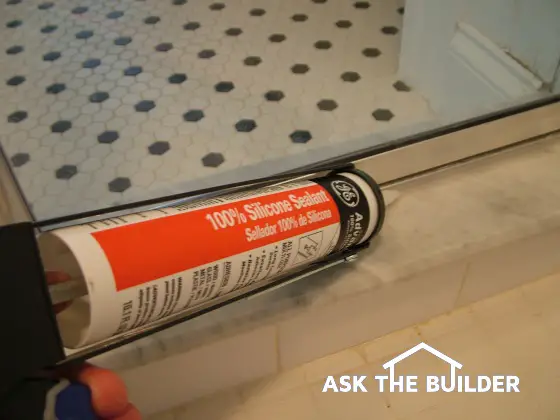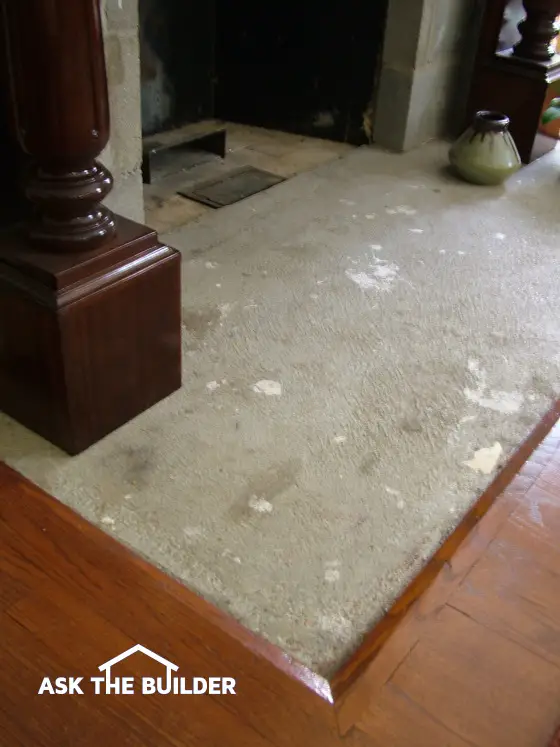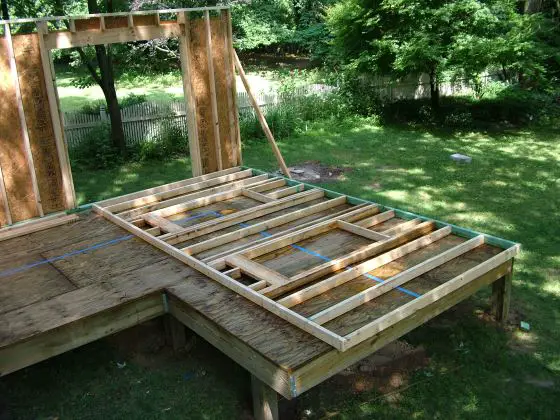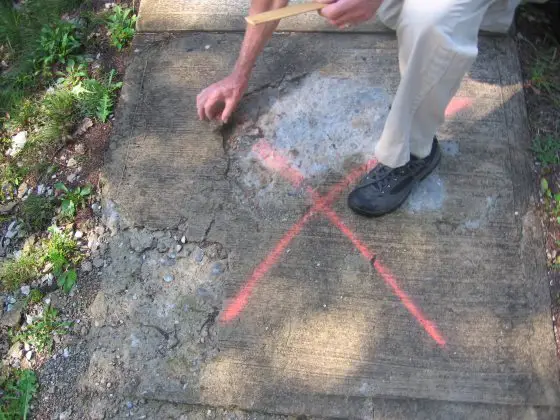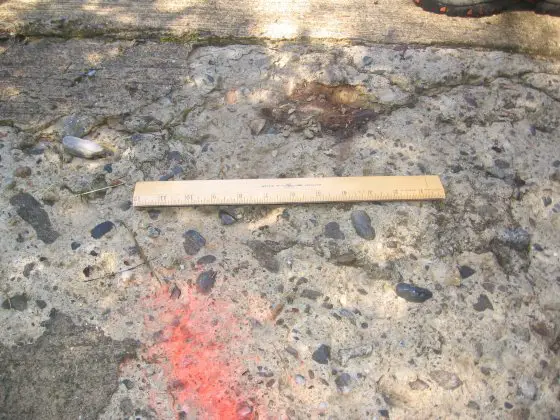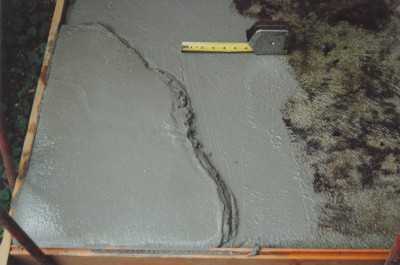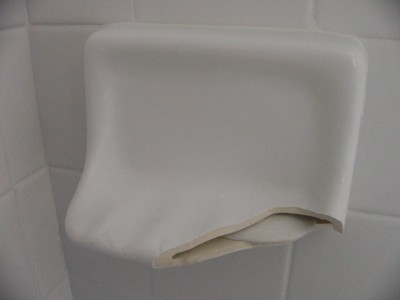What's in This Issue
GRANITE COUNTERTOPS AND RADON
COMPOSITE DECKING ANNOUNCEMENT
SEPTIC TANK INFORMATION
THE STAIN SOLVER WAREHOUSE STORY
SANDSTONE AND SLATE FLOORING DVD
LATEST COLUMNS AND VIDEO
Granite Countertops and Radon
Last week there was an article in the New York Times about radon coming from granite countertops. You will probably have to register to read it, but registration is free and well worth it.
Radon is a gas that is generated from the decay of radioactive elements found in certain rock, and inhaling it is said to be a cause of lung cancer. These radioactive elements can be found in igneous and metamorphic rocks. Granite is a rock that indeed can contain the elements that produce radon. I don't dispute the claim that radon is a cause of lung cancer.
So is this a real scare or not? I sometimes wonder if we've not become too overprotective. Certain building products indeed are toxic, and we found out after the fact. Asbestos being one of them. Lead in paint and plumbing fixtures is another example.
But granite? Sure some of it is producing radon in great amounts. But what about some of the commercial and institutional buildings in our nation that have all sorts of granite inside as wall coverings and flooring? Was there any testing done to see if the employees in these buildings suffered a higher incidence of lung cancer once you filtered out those who smoked and those who were exposed to second-hand smoke?
Add to this that our acceptable standard for radon exposure may be low. I didn't have time to look into this for you, but I could have sworn that years ago I heard that Scandinavian countries have a radon limit much higher than the USA, and they don't have people dropping like flies from lung cancer. Once again, that needs to be fact checked.
Be sure to read the article in the New York Times as I feel they covered the topic very thoroughly.
Composite Decking Announcement
Four and a half years ago, I wrote a column about Composite Decking. Composite decking can be described as a man-made material that often is a mixture of plastic and wood fiber. A few weeks ago in this newsletter I shared a news item about Trex. Trex is a composite decking material.
In my past column, I gave my opinion that the jury was still out on this new product. Why? The reason was simple to me. Much of the material contained wood fiber that was not treated for decay. We all know if you place regular wood outdoors, in short order fungi will start to eat away at the wood and destroy it. This is why telephone poles, dock and pier lumber, railroad ties and all sorts of other lumber has been treated with chemicals for years to prevent wood rot.
Two weeks ago I received a disturbing email from a company that was trying to do composite decking the right way. Louisiana Pacific came out with a composite decking material called WeatherBest years ago. I talked with them when I wrote my column. They were using a wood preservative to make WeatherBest.
But the latest news is that they are having issues with some of their product. You can discover more about this here.
The bottom line as far as I am concerned is that composite decking appears has problems that need to be resolved. This industry has to create a product that absolutely will not rot. My position is that water is getting into the composite decking and causing the small fibers of wood to rot. When the decking manufacturers can prove that a rot-proof product exists, then I am willing to listen to a new sales pitch. Until such time, I will use construction heart redwood for all of my decking needs.
Septic Tank Information
This morning, I got a fascinating email from a company that install elevators and lifts in homes. It seems a homeowner was steaming mad about the elevator workers rinsing off their drywall-finishing tools at his house. Small amounts of water-soluble drywall compound entered the septic tank. The owner was demanding the company pump the septic system as the drywall compound ruined the tank - or so he claims.
This caught my eye because I am the proud owner of a septic system after being on a city sewer for 55 years! I am also a master plumber and have installed septic systems, but never owned one. So I know a little bit about how they work and what you should an shouldn't do with septic systems.
Eleven years ago, I wrote a series of columns all about septic systems. I have listed them at the bottom of this news item. The workman for the elevator company did cause some solids to enter the septic system. While that is not a great thing, septic systems are designed to handle it. In fact, each time that homeowner who complained washes muddy clothes or empties filthy mop water into his drains, he is adding solids to the septic tank.
Every few years, you are supposed to have your septic tank pumped to get rid of these solids. If you maintain a septic system, it can last for many years. Pumping a tank is easy and affordable. Make sure you pump your tank and have the system inspected. Remember, your septic system can affect the water quality of any streams, lakes or rivers near you so it is important that you keep the system working well.
How Septic Tanks Work
Septic Tank Do's and Don'ts
Septic Tank Maintenance
Stain Solver Warehouse Story
Last week, I worked every day at the new Stain Solver warehouse. I had all sorts of things to do to get the business relocated and running as smoothly as possible. By the end of the week, I was really happy with the way things turned out. On Sunday, the traditional day of rest, it was anything but for me. I was really lucky to have my son Tristan working with me. He did an amazing job of painting the walls and cutting ceiling tiles.
If you are a new subscriber, you are wondering, "What in the world is Stain Solver?" More on that in a moment. But odds are you already may be one of my customers. If you are, then you have gotten results like Cindi Dugger did just a few days ago. Cindi wrote to Kathy and I:
"You saved one of my FAVORITE jackets. I was ironing it to wear on Sunday, and noticed a huge stain on the sleeve. It had been washed and hung to dry, but obviously this stain had NOT washed away. I figured, 'What the heck, what do I have to lose?' So I threw it in the washer and soaked it with your Stain Solver for a couple of hours. Then I washed it and hung to dry. It looks like new again!! This jacket even has rhinestones on it, and they are none worse for wear!! Now to tackle my bathroom tile floor--which is why I bought this in the first place."
Kathy and I have run this Stain Solver business for over 12 years. We have tens of thousands of satisfied customers like Cindi. Why? Because we make Stain Solver the way I built homes. We use the best materials and lots of them. We never compromise quality.
It fact, I discovered an interesting fact not too long ago from the chemist I buy from. He told me the raw materials used to make the active ingredient are food-grade quality registered with the FDA. You can't get much purer than that. That is just another reason why Stain Solver is such a green product.
Next week I am going to start collecting names for all who want to receive a free brand new newsletter just about Stain Solver. Each issue of this newsletter will contain tips and the hundreds of things around your home it will clean. This newsletter is going to be filled with stories just like the one from Cindi. Just wait until you discover the things Stain Solver will clean - things you would have never guessed. I will tell you next week how to sign up for that product-specific newsletter.
To celebrate this new newsletter, let's have a sale over the next few days. Go to the Stain Solver website and pick any size. But notice that you do get the best deal when you choose a 12 or 50 pounder. Just do the math! Look at what you are paying per pound as you go up in size. Share the bigger size with family or friends.
Then once you convince yourself that the larger size is better, you can then get 20 percent off of that price if you use this promo code:
news20
Remember, you need to place your order by Sunday, August 17, 2008.
Sandstone and Slate Flooring DVD
Sashe and Torsten Fischer are subscribers to this newsletter. They live in New South Wales near The Hawkesbury River, Sydney, Australia. Torsten has been a tile and stone setter for 30 years - that means he must be near my age - and Sashe, Torsten's wife, does what Kathy does here at AsktheBuilder.com. She is the business head and pulls the levers back at the office.
Sashe and Torsten produced a DVD about how to install stone flooring. Sashe went to great effort and expense to send me 5 copies to give away to you. I am watching the two-DVD set as I write this newsletter. That explains why this newsletter is a little disjointed.
So far what I have seen on the DVD is pretty interesting. I know the tremendous amount of work that Sashe and Torsten went through to make this DVD set, as I have produced five of my own DVDs over the past four years. But I digress.
You may want one of these DVDs if you are interested in stone flooring and how they are installed. You may be one of five people who will get it for free if you are one of the first five to email me with the correct answer to a question about my past. If you don't get a free copy, Sashe will gladly sell you one. I can tell you that it is well worth the price.
Okay, time for the question. I am only going to notify the first five who give me the correct answer. If you do not hear from me, that means you might have had the right answer, but didn't react quickly enough. No worries as there will be other fun contests soon! Put on your Columbo trench coat right now and start sleuthing.
Tell me the first job I ever had.
Latest Columns and Video
Is it time for a new shower head in your bathroom?
What happens if you drop the new shower head as you are installing it?
Does your toilet run after you flush it? This video was a collaborative effort with another popular YouTuber Paul Seveng. It should help you.
Index of past newsletters.
